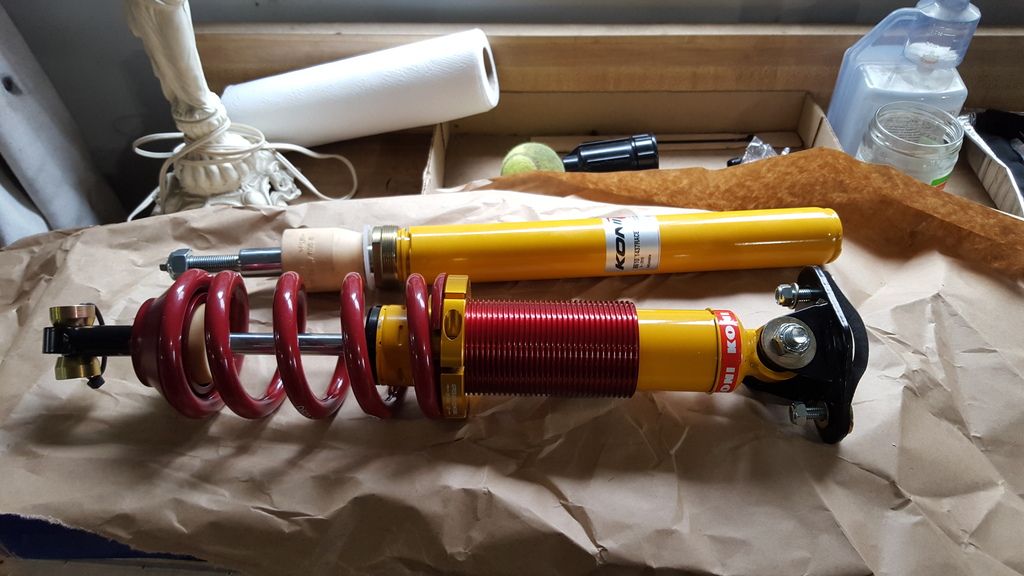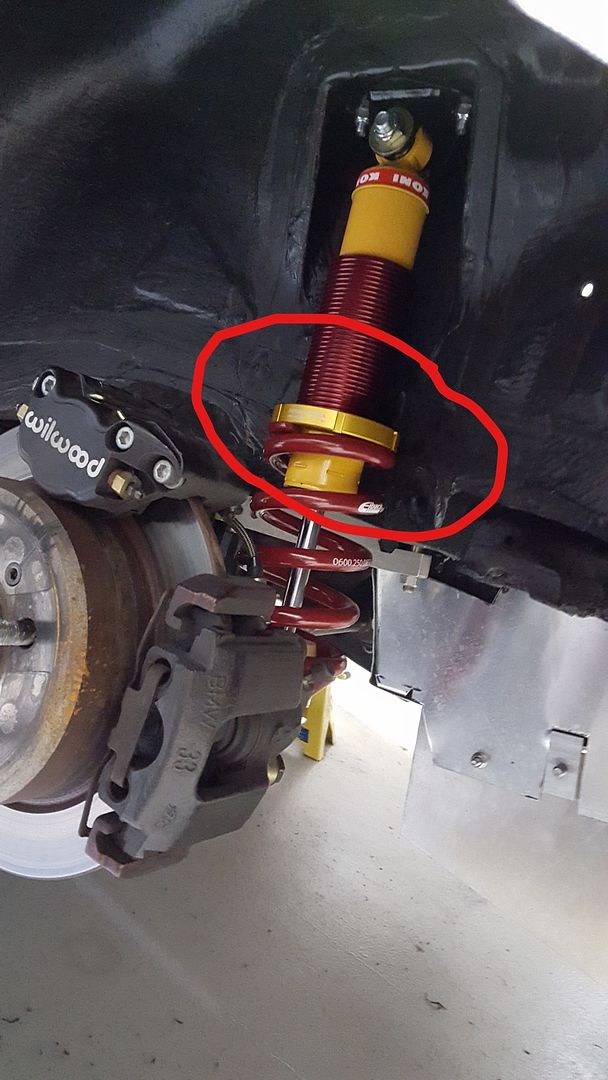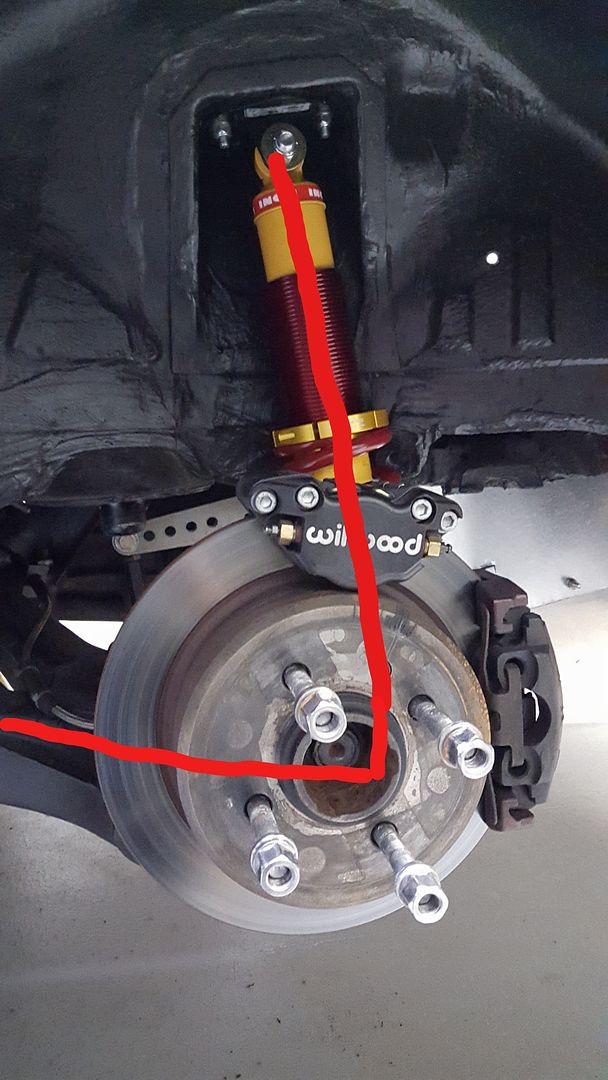Anyhow, this is what the GC rear units look like:

Things to note for installation:
- First issue was the upper mount didn't fit into the strut tower. The inner shell of my tower is still there, and the boxing is overlayed. To fix this I had to take the mounts off and cut them up a bit, repaint them and through them back on, no big deal.
- Next issue, was the spring collar interfering with the wheel well. The upper strut mount is offset so that the center line of the coil is moved outward. It isn't quite enough, so in the below picture I have outlined where you have to cut out and rebuild further inboard. I cut out a fair amount of wheel well and patched it further in to ensure there is never contact.

- The third problem is the lower coil perch rubs on the CV boot when in full extension (green arrow points to where the contact is). In the picture below, you'll notice the lower link is offset (red arrow), this allows the coil to be moved slightly further away from the boot. When the car is on the ground loaded up it doesn't rub, but as soon as you jack it up it contacts. I am looking into some slim boots.

I have 850 lb springs on there now to try out. May end up with a stiffer, long spring eventually. Before when I still had separate spring, I ran 1100lb units and it was not enough. The car squatted so hard coming out of corners, it was kind of shocking the compliance you get on the spring out of the stock suspension in an e30.
Anyhow, we will see next season how these work, just feeling the car compress vs the old set-up it seems way better. The coil angle is not bad in respect to the suspension axis. So in the below picture you can see what I am talking about, the smaller the angle between the two lines, the less actuation per compression you get, obviously the angle becomes a bit smaller once it's loaded up, but it's minimal.


Things to note for installation:
- First issue was the upper mount didn't fit into the strut tower. The inner shell of my tower is still there, and the boxing is overlayed. To fix this I had to take the mounts off and cut them up a bit, repaint them and through them back on, no big deal.
- Next issue, was the spring collar interfering with the wheel well. The upper strut mount is offset so that the center line of the coil is moved outward. It isn't quite enough, so in the below picture I have outlined where you have to cut out and rebuild further inboard. I cut out a fair amount of wheel well and patched it further in to ensure there is never contact.

- The third problem is the lower coil perch rubs on the CV boot when in full extension (green arrow points to where the contact is). In the picture below, you'll notice the lower link is offset (red arrow), this allows the coil to be moved slightly further away from the boot. When the car is on the ground loaded up it doesn't rub, but as soon as you jack it up it contacts. I am looking into some slim boots.

I have 850 lb springs on there now to try out. May end up with a stiffer, long spring eventually. Before when I still had separate spring, I ran 1100lb units and it was not enough. The car squatted so hard coming out of corners, it was kind of shocking the compliance you get on the spring out of the stock suspension in an e30.
Anyhow, we will see next season how these work, just feeling the car compress vs the old set-up it seems way better. The coil angle is not bad in respect to the suspension axis. So in the below picture you can see what I am talking about, the smaller the angle between the two lines, the less actuation per compression you get, obviously the angle becomes a bit smaller once it's loaded up, but it's minimal.








 . I forgot factor compression distance into that calc. It should be: [1100*(75^2)]/(108^2). Gives around 530 lb. Which gives a percent decrease of %51.8. Forgot to divide the required force by the desired vertical distance (this is what gives the squared values your talking about.
. I forgot factor compression distance into that calc. It should be: [1100*(75^2)]/(108^2). Gives around 530 lb. Which gives a percent decrease of %51.8. Forgot to divide the required force by the desired vertical distance (this is what gives the squared values your talking about.
Comment